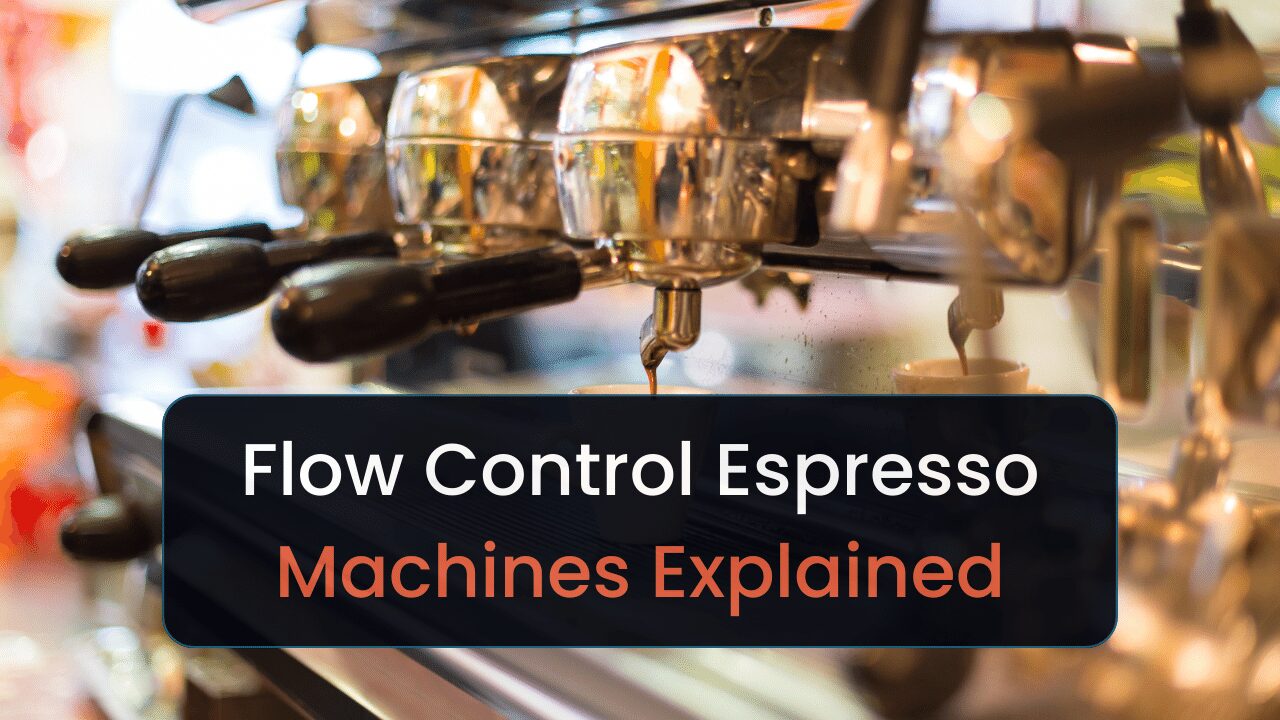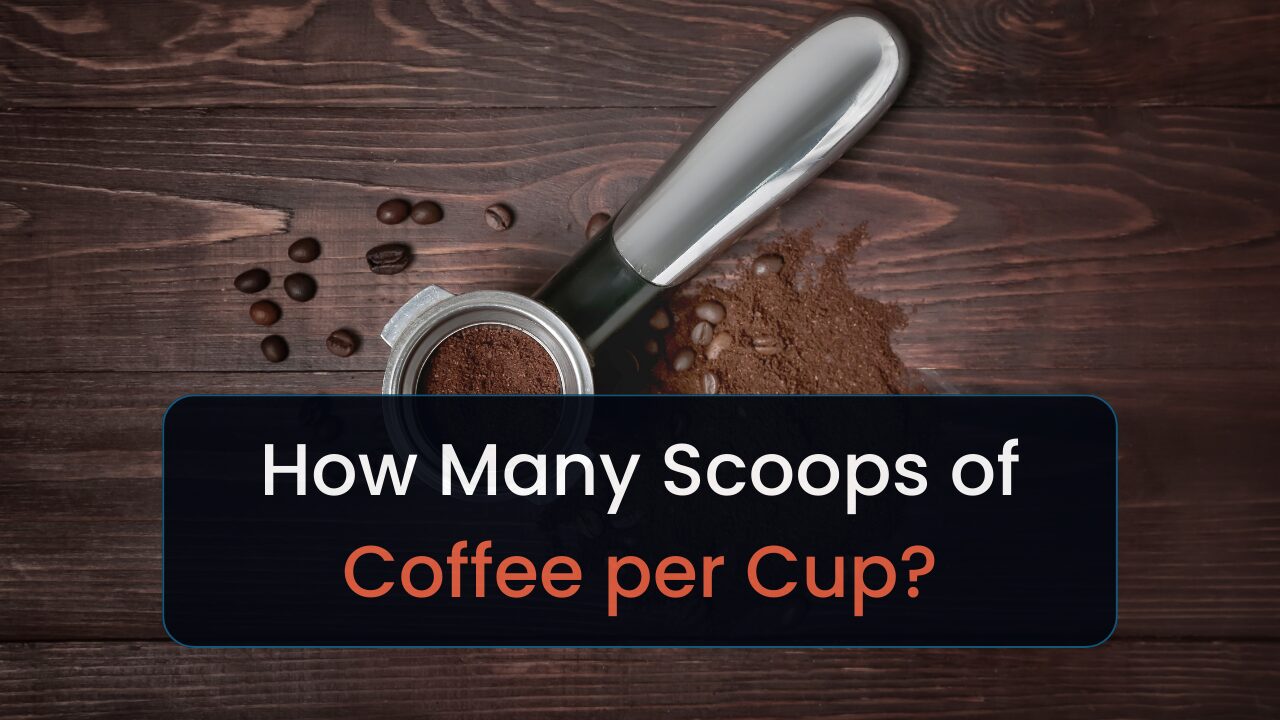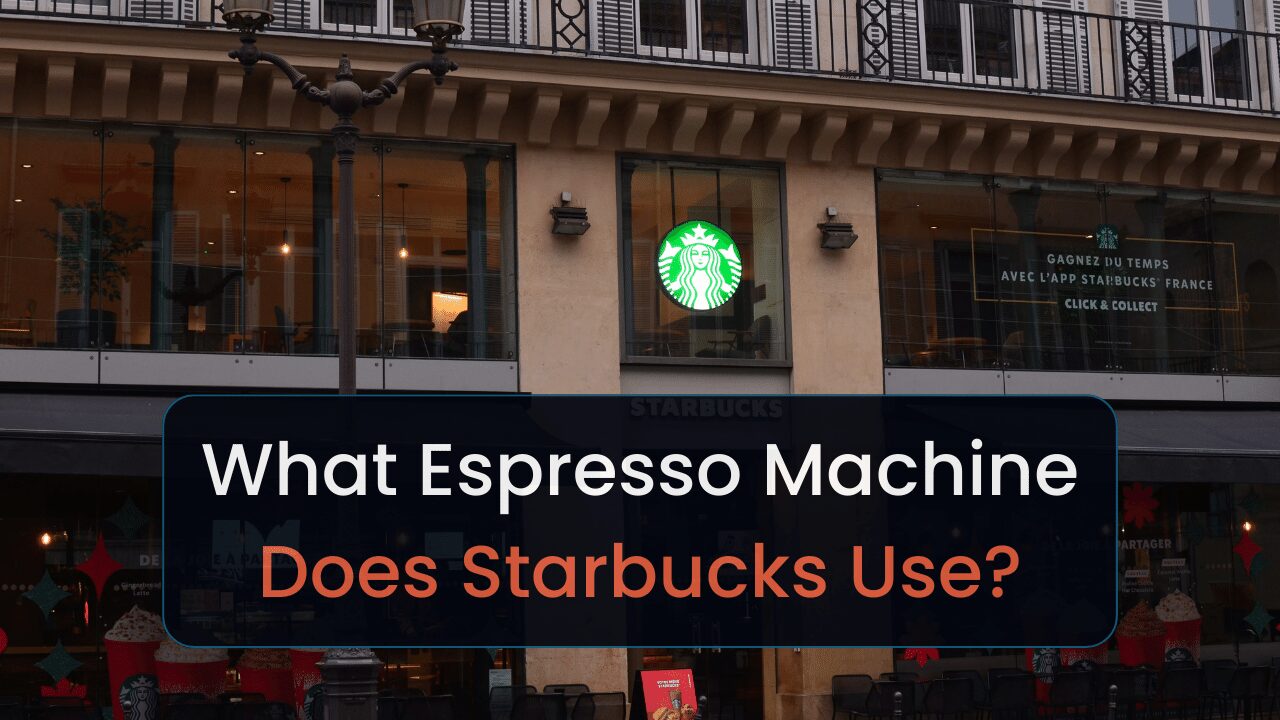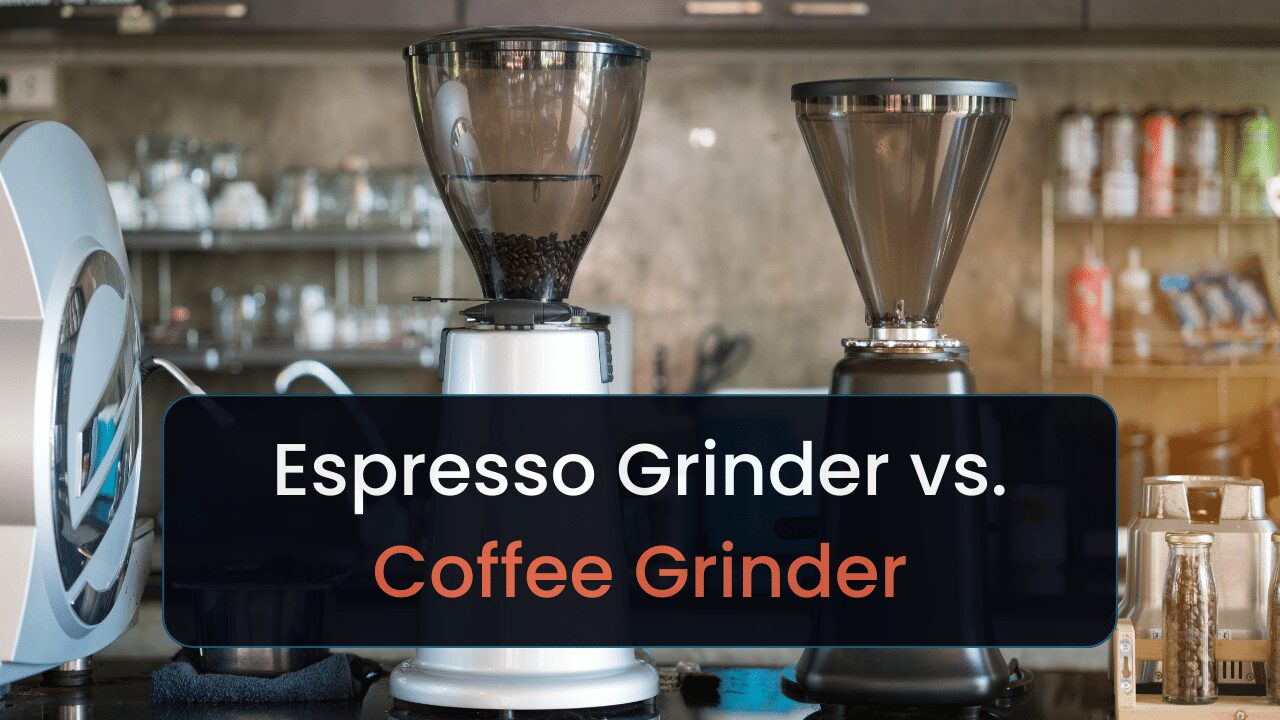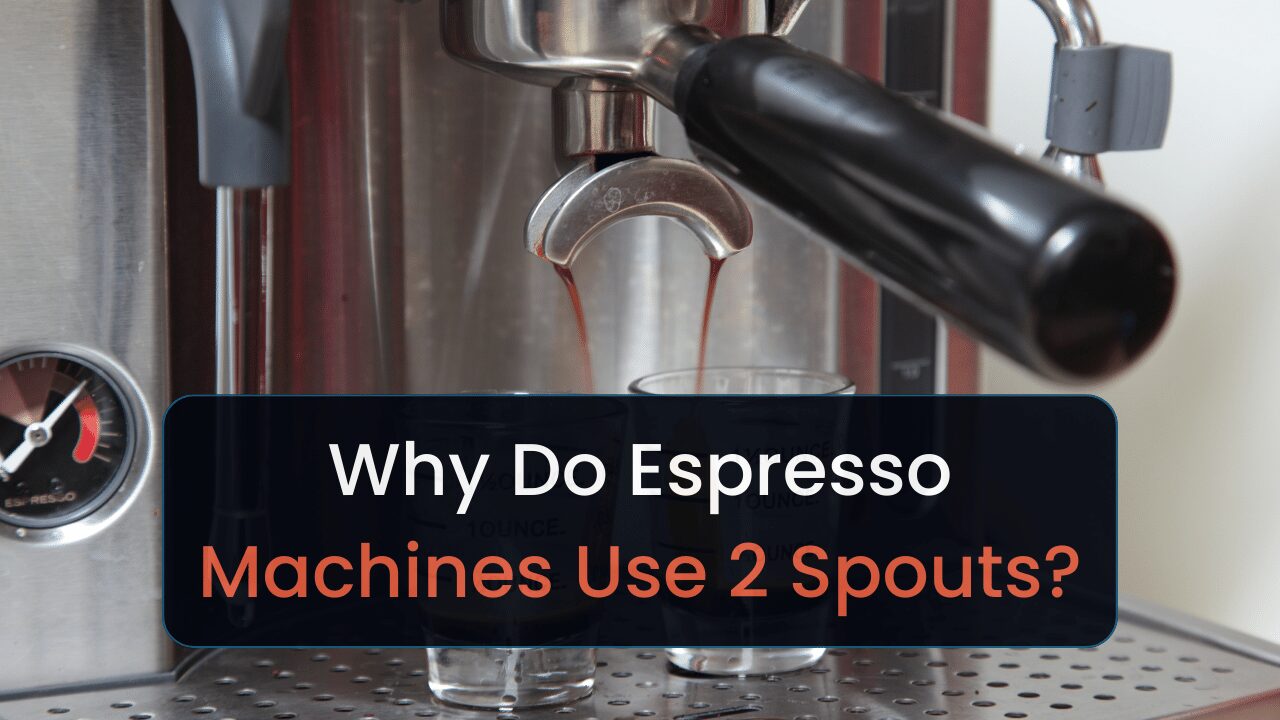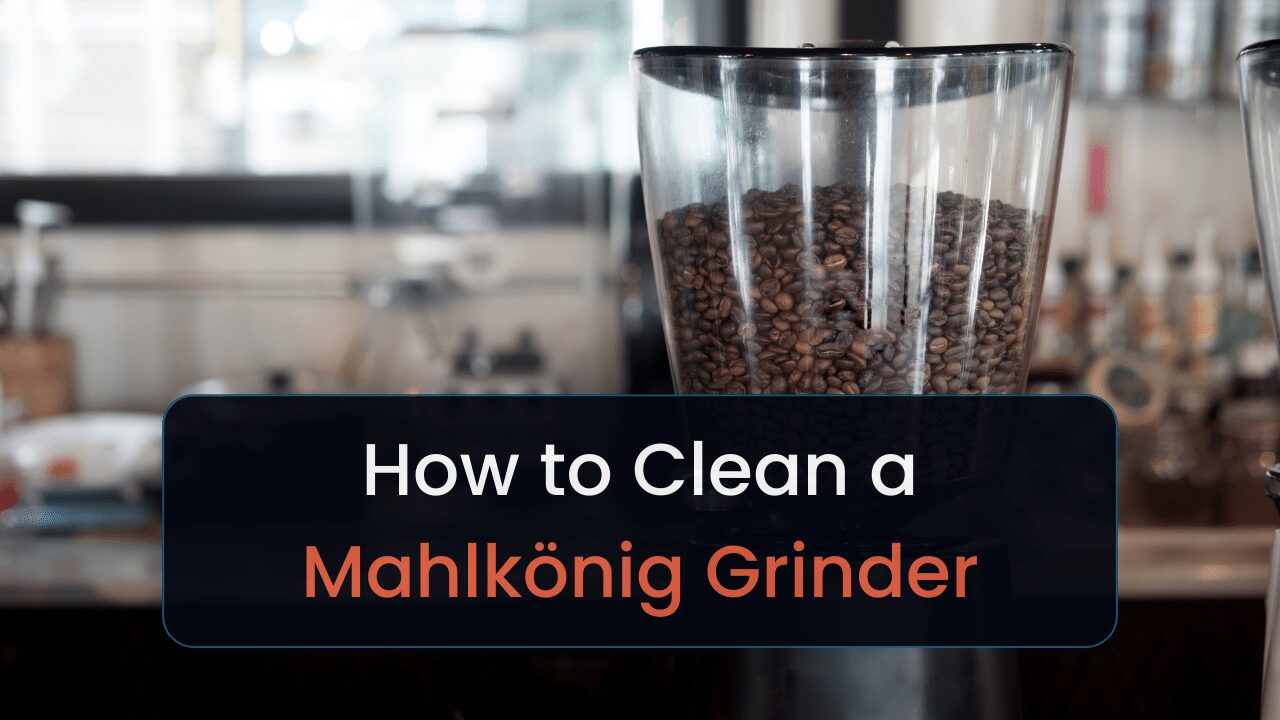The brewing process and the grind size used are the main factors that differentiate the French press and espresso.
I’m Tim, a coffee connoisseur. I’ve been brewing espressos and French press coffee for over a decade and made this guide to explain the differences.
So, read on to learn them all.
French Press and Espresso Comparison
Here are the main differences between a French press and espresso. Scroll down for more detailed comparisons of each item.
| Brew | French Press | Espresso |
| Beans | Medium and dark roast | Dark and espresso roast |
| Grind size | Coarse | Fine |
| Strength | Medium | Strong |
| Taste | Rich, full-bodied, and aromatic | Strong, concentrated, and bold |
| Caffeine | Less per volume (13.4 mg per ounce) | More per volume (64 mg per ounce) |
| Prep time | 5 minutes | 2 minutes |
| Brewing time | 3-5 minutes | Less than 1 minute |
| Cleanup time | 2-3 minutes | 5-10 minutes |
| Health | Contains more cafestol, which can increase LDL cholesterol | Contains more caffeine per volume, which can increase heart rate and jitters |
| Best for | Coffee based drinks | Espresso based drinks |
| Requirements | French pressCoffee grinder or pre-ground coarse-ground coffee | Espresso machineCoffee grinder or pre-ground fine-ground coffee |
| Costs | $ | $$$ |
What’s Best For You?
Whether French press or espresso is best for you depends on several factors.
If you want the most intense flavors and prefer drinks such as cappuccinos, lattes, flat whites, etc., then espresso is likely best for you.
That said, espresso machines cost a lot (ranging from $100 to $1,000). So if you don’t already have one, French press is the most economical option.
French press coffee has strong flavors as well but is less concentrated than espresso. It also contains more coffee oils, which gives it a uniquely smooth texture.
French press is a great option if you prefer a strong cup of smooth regular coffee.
However, you can enjoy both brewing methods, even on the same day. You don’t have to limit yourself to just one.
The Differences Explained
Here are the differences between espresso and French press coffee.
Coffee Bean Type
When it comes to coffee bean types for French press and espresso, the main difference revolves around the roast level of the beans.
The roast level of the beans can vary depending on personal preference, but generally, French press coffee is best with medium to dark roast beans.
These roasts tend to bring out the full-bodied and robust flavors that are well-suited for the immersion brewing method of the French press.
Espresso, on the other hand, often uses medium to dark/espresso roasts, but some espresso blends may use lighter roasts to bring out more nuanced flavors.
See our guide on coffee bean roast levels to learn more about this.
Grind Size
French press requires a coarser grind compared to espresso. For French presses, the beans are typically ground to a coarse consistency to allow for proper extraction during the brewing process.
On the other hand, espresso requires a fine grind to optimize the extraction process and create the desired concentrated flavor.
French press coffee has a strong flavor and smooth texture as it extracts more oils from the coffee grounds. Expresso has a robust and strong taste, too, but more bitter with a layer of crema that adds a subtle bitterness.
Read our guide on coffee grind size to learn more.
Strength
The strength of coffee in a French press and espresso is determined by the brewing method and the amount of coffee used.
French press coffee extracts more oils and flavors from the coffee grounds, resulting in a strong and bold taste. Yet French press coffee is still less concentrated than espresso, but it has a rich and intense flavor profile.
On the other hand, espresso is a highly concentrated form of coffee. It is brewed by forcing pressurized hot water through fine-ground coffee beans.
The high pressure and short extraction time result in a concentrated shot of coffee with a strong and intense flavor. Espresso has a bolder and more concentrated taste compared to French press coffee.
In short, the strength of French press coffee lies in its full-bodied and robust flavor, while espresso is known for its highly concentrated and intense taste.
Taste/Flavor
French press coffee tends to have a rich and full-bodied flavor due to the longer steeping time and the presence of coffee oils in the final brew. It often showcases notes of chocolate, caramel, and nuttiness.
Espresso typically exhibits a bolder and more complex profile, with a balance of acidity, bitterness, and sweetness.
The flavor notes in espresso can vary widely, ranging from fruity and floral to earthy and chocolatey, depending on the beans used.
Caffeine
French press coffee has a longer steeping time also leads to a higher caffeine extraction. As a result, French press coffee generally has a higher caffeine content per serving compared to espresso (13.4 mg per ounce).
Despite its strong taste, espresso typically contains less caffeine per serving compared to a cup of French press coffee (but more per volume– 64 mg per ounce).
This is because the contact time between the water and coffee grounds is significantly shorter in espresso brewing.
Of course, the actual caffeine content varies depending on the coffee beans, grind size, and the amount of coffee you use.
Preparation Time
The preparation time for a French press is relatively quick and simple.
It involves measuring and grinding coffee beans, boiling water, and allowing the coffee to steep for a few minutes. This process usually takes around 4-5 minutes.
On the flip side, preparing espresso requires more time and specialized equipment.
It involves grinding coffee beans finely, tamping the grounds into a portafilter, and using an espresso machine to extract the concentrated coffee. This process can take around 1-2 minutes.
Brewing Time
The brewing time for French press coffee is longer. After pouring hot water over the coffee grounds, it typically takes around 4-5 minutes for the coffee to steep and extract its flavors.
Conversely, brewing espresso is a much quicker process. Once the coffee grounds are tamped and the portafilter is locked into the espresso machine, the espresso brewing time usually ranges from 20 to 30 seconds.
Cleanup Time
Cleaning up a French press is relatively easy. After pressing down the plunger to separate the coffee grounds from the brewed coffee, you need to empty the grounds, rinse the French press, and it’s ready to use again.
Cleaning a French press takes about 2-3 minutes.
On the other hand, cleaning an espresso machine can be more time-consuming. It involves removing the used coffee grounds, cleaning the portafilter, group head, and steam wand, and potentially backflushing the machine.
The espresso machine cleaning process can take around 5-10 minutes.
Health
French press and espresso differ in terms of health effects.
Since French press coffee isn’t completely filtered, it contains a compound called cafestol, which is a potent stimulator of cholesterol production. [1]
This can lead to increased levels of LDL cholesterol (the “bad” cholesterol) in the body.
On the other hand, espresso is typically filtered, which removes most of the cafestol, resulting in lower cholesterol levels.
French press coffee tends to have a higher acidity level compared to espresso. This higher acidity can potentially cause gastrointestinal issues such as heartburn or acid reflux, especially for individuals who are prone to these conditions.
Espresso is generally less acidic and may be easier on the stomach for some people.
Espresso typically contains more caffeine per ounce compared to French press coffee. This higher caffeine content in espresso can lead to potential side effects like increased heart rate or jitteriness.
It’s important to note that individual sensitivities and preferences can vary, and these differences may not have significant health impacts for everyone.
It’s always advisable to listen to your body and your doctor. Then adjust your coffee consumption based on your doctor’s recommendations, your own tolerance, and your preferences.
Best For Drinks
French press is best for brewing full-bodied and flavorful coffee; it is ideal for those who enjoy stronger and more intense cups of regular coffee.
You can use your French press to brew hot coffee, or you can add coarse coffee grounds and cold water to it and live it in your fridge overnight to make cold brew coffee.
Espresso is best for those who prefer a quick and intense coffee experience. It serves as a base for various espresso-based drinks like cappuccinos, lattes, Americanos, flat whites, macchiatos, and more.
Requirements/Machines
To make French press coffee, you will need the following:
- Coarsely ground coffee beans: French press coffee requires a coarser grind compared to other brewing methods. I recommend grinding whole beans yourself for optimal freshness and flavor.
- French press: This is a cylindrical glass or stainless steel container with a plunger and a mesh filter. It is used to brew the coffee.
- Electric or stove-top kettle: Boil water to the desired temperature, typically between 195°F (90°C) and 205°F (96°C). The water should not be boiling when you pour it into the French press.
To make espresso coffee, you will need the following:
- Espresso machine: An espresso machine is specifically designed to brew espresso. It uses pressure to force hot water through fine-ground coffee, resulting in a concentrated and flavorful coffee.
- Fine ground coffee beans: Espresso requires a very fine grind to extract the flavors properly. I recommend using an electric grinder to get a consistent grind size.
- Espresso cups (optional): Espresso is traditionally served in small, 1-ounce cups. You can use larger cups to save money.
- Milk frother (optional): If you prefer milk-based espresso drinks like lattes or cappuccinos, you may need a milk frother to steam and froth the milk.
Costs
In general, espresso drinks have a much higher upfront cost (for the espresso machine) and cost more to use. French presses are one of the most inexpensive coffee brewing methods.
- Equipment Cost: French presses are affordable. You can usually buy one for $30 or less. On the other hand, making espresso requires an espresso machine, which can be quite expensive– ranging from $100 to $1,000+.
- Coffee Bean Cost: The type and quality of coffee beans used can significantly impact the cost. Generally, espresso beans tend to be more expensive than regular coffee beans.
- Maintenance and Upkeep: Espresso machines require regular cleaning, maintenance, and occasional replacement of parts such as filters, gaskets, and seals. These maintenance costs can add up over time. In contrast, you can get a new French press for usually less than an espresso machine repair cost.
- Specialty Drinks: If you enjoy specialty espresso-based drinks like lattes, cappuccinos, or macchiatos, the cost difference can increase further. These drinks often require additional ingredients like milk, syrups, or chocolate, which can contribute to the overall cost.
FAQs
Here are some common questions about French presses and espresso.
Is French press coffee stronger than espresso?
No, espresso is usually stronger than French press coffee because it is brewed with very fine grounds and high pressure. As a result, espresso has an intense flavor and more caffeine per ounce compared to French press coffee.
Does espresso taste better than French press?
It ultimately comes down to individual taste. Espresso has a more intense flavor than French press coffee. Many people enjoy the intense flavor profile of espresso, while others prefer the smoother taste of French press coffee.
Is a French press good for espresso?
No, a French press is not suitable for making espresso beverages. Espresso requires a much finer grind than what is used in a French press and needs to be brewed with high pressure, which the French press does not provide.
Is French press coffee higher in caffeine?
Espresso contains more caffeine per ounce compared to French press coffee. But, a French press coffee is usually larger than a shot of espresso, so it has more total caffeine.
Can you make a latte with a French press?
No, it is not possible to make a latte with a French press. Latte is an espresso-based drink, which means you need an espresso machine and fine-ground coffee beans to make it.
Final Thoughts
The main difference between French presses and espresso lies in the brewing method and the resulting flavor profile.
French press produces a full-bodied and rich coffee, while espresso is a concentrated and intense shot with a thick layer of crema.
French presses are best for people who like strong cups of regular coffee, and espresso is best for espresso-based drinks.
Interested in brewing in an espresso machine or French press? Read our top espresso machines and French press guides.

